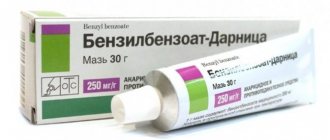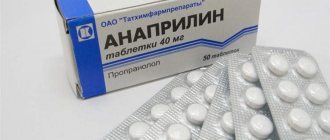pharmachologic effect
The drug Betoptik is an antiglaucoma drug with a beta1-blocking effect (without internal sympathomimetic activity). Intraocular pressure decreases as a result of decreased production of aqueous humor.
The onset of the hypotensive effect occurs half an hour after instillation. The hypotensive effect reaches its maximum after 2 hours. The duration of action is 12 hours, that is, Betoptik needs to be instilled twice a day.
Compared to other beta blockers, this drug does not cause a decrease in blood supply to the fibers of the optic nerve, does not cause miosis, spasm of accommodation and the appearance of a veil before the eyes.
Instructions for use BETOPTIC S
Diabetes:
Beta-blockers should be prescribed with caution to patients with a tendency to hypoglycemia, because these drugs may mask the symptoms of acute hypoglycemia.
Thyrotoxicosis:
Beta blockers may mask some symptoms of hyperthyroidism (eg, tachycardia). In patients with suspected thyrotoxicosis, beta-blockers should not be abruptly discontinued, because this may cause symptoms to worsen.
Angle-closure glaucoma:
only in combination with miotics, since betaxolol does not affect pupil size.
Muscle weakness:
Beta blockers may cause symptoms similar to those of myasthenia gravis (eg, diplopia, ptosis, general weakness).
Surgery:
Before elective surgery, beta-blockers should be gradually withdrawn 48 hours before general anesthesia.
Pulmonology:
Caution should be exercised when prescribing beta-blockers to patients with a tendency to bronchospasm.
Anaphylactic reactions:
Patients taking beta-blockers may not be sensitive to the usual doses of epinephrine required to relieve anaphylaxis.
Beta blockers prescribed locally may enter the systemic circulation. In this case, the same side effects may occur as with systemic use .
Cases of severe respiratory and cardiovascular disorders have been described, including fatal bronchospasm in patients with bronchial asthma and death from heart failure when using beta-blockers.
Betoptik C has virtually no effect on heart rate and blood pressure. However, caution should be exercised when prescribing it to patients with atrioventricular block and a history of heart failure. Treatment should be stopped when the first signs of heart failure appear.
Betoptik C contains the preservative benzalkonium chloride, which may be absorbed; contact lenses. Before instilling the drug, the lenses should be removed and put back in no earlier than 20 minutes after instillation of the drug.
Influence on the ability to drive vehicles and operate machinery.
If, after using the drug, the patient’s vision clarity is temporarily reduced, until it is restored, it is not recommended to drive a car or engage in activities that require increased attention and reaction.
To prevent bacteria from getting inside the bottle, do not touch the tip of the dispenser dropper to any surfaces.
Carefully,
should be used for diabetes mellitus, pheochromocytoma, Raynaud's syndrome.
special instructions
Patients with diabetes mellitus should be prescribed Betoptik with caution, as the symptoms of hypoglycemia become mild. With thyrotoxicosis, you also need to remember that the symptoms of the disease can be masked when using this medicine.
Before a planned operation, Betoptik should be gradually discontinued two days before anesthesia, because the sensitivity of the myocardium to sympathetic stimulation decreases.
Even when used topically, Betoptik can enter the systemic circulation and cause systemic reactions, including bronchospasm and disruption of the cardiovascular system.
The drug contains preservatives that are deposited on soft contact lenses, so they should be removed 20 minutes before instillation.
In some cases, after instillation of Betoptik, patients' vision temporarily decreases in clarity, so they should not drive until the condition normalizes.
Betoptic®
Diabetes mellitus: β-blockers should be prescribed with caution to patients with a tendency to spontaneous hypoglycemia and patients with labile diabetes mellitus, since these drugs may mask the signs and symptoms of acute hypoglycemia.
Thyrotoxicosis: β-blockers may mask some symptoms of hyperthyroidism (eg, tachycardia). In patients with suspected thyrotoxicosis, β-blockers should not be abruptly discontinued, as this may cause an increase in symptoms.
Myasthenia Gravis: β-blockers may cause symptoms and signs similar to those of myasthenia gravis (eg, diplopia, ptosis, general weakness).
Surgery: The anesthesiologist should be informed that the patient is taking betaxolol. Before a planned operation, beta-blockers should be gradually (not simultaneously!) withdrawn 48 hours before general anesthesia, because during general anesthesia, they may reduce the sensitivity of the myocardium to sympathetic stimulation necessary for cardiac function (for example, they may block the action of the systemic β-agonist epinephrine).
Pulmonology: caution should be exercised when prescribing β-blockers to patients with severely reduced respiratory system function. Despite the fact that clinical studies have shown no effect of betaxolol on respiratory function, the possibility of hypersensitivity to the drug should not be excluded.
Risk of anaphylactic reaction: Patients taking beta-blockers may have a history of atopy or anaphylactic reactions. In case of repeated reactions, such patients may not be sensitive to the usual doses of epinephrine required to relieve anaphylaxis.
Betaxolol should be used with caution in patients with severe peripheral circulatory disorders (i.e., Raynaud's syndrome and pheochromocytoma).
When administered locally, β-blockers can enter the systemic circulation. Thus, beta-blockers can cause cardiovascular, pulmonary and other adverse reactions, as with intravenous and parenteral administration.
Cases of severe respiratory and cardiovascular disorders have been described, including death from bronchospasm in patients with bronchial asthma and death from heart failure.
Cardiac disorders: In patients with cardiovascular disease (eg, coronary artery disease, Prinzmetal's angina, heart failure) and hypotension, beta-blocker therapy should be critically evaluated and treatment with other active substances considered. Patients with cardiovascular disease should be closely monitored for signs of exacerbation of the disease and adverse reactions.
Corneal diseases: β-blockers may cause dry eyes. The drug should be used with caution in patients with corneal diseases.
Choroidal detachment: cases of choroidal detachment have been described when using medications that prevent the formation of intraocular fluid (for example, timolol, acetazolamide) after filtering operations.
Betoptik® S contains the preservative benzalkonium chloride, which can cause eye irritation and discoloration of soft contact lenses. Direct contact of the drug with soft contact lenses should be avoided. Patients using contact lenses should remove the lenses before using the drug and put them back no earlier than 15 minutes after instilling the drug.
Do not touch the tip of the dropper bottle to any surface to avoid contamination of the bottle and its contents. The bottle must be closed after each use.
Betoptik eye drops bottle 0.5% 5ml
A country
Belgium
Country of manufacture may vary depending on the batch of goods. Please check with the operator for detailed information when confirming your order.
Active substance
Betaxolol
Compound
The active substance is Betaxolol.
pharmachologic effect
Pharmacological action - antiglaucoma, hypotensive, antianginal, antiarrhythmic. It blocks beta1-adrenergic receptors, lacks its own sympathomimetic activity, and has insignificant membrane stabilizing activity. Reduces the sensitivity of peripheral tissues to catecholamines, inhibits central sympathetic impulses, suppresses renin secretion. It has a negative chrono-, ino-, dromo- and bathmotropic effect. Reduces heart rate (HR), reduces contractility and myocardial oxygen demand (antianginal effect), inhibits the automatism of the sinoatrial node and the occurrence of ectopic foci in the atria and AV junction. The effect develops 2-3 hours after administration, reaches a maximum after 3-4 hours, lasts 12-24 hours, stabilizes with regular use for 1-2 weeks. Quickly and completely absorbed from the gastrointestinal tract (regardless of food intake). Metabolized into liver with the formation of inactive metabolites, excreted in the urine. Passes through the BBB, placental barrier. Penetrates into mother's milk.
Indications for use
Arterial hypertension, exertional angina; akathisia caused by neuroleptics; eye drops: chronic open-angle glaucoma, intraocular hypertension, condition after laser trabeculoplasty, long-term antihypertensive therapy after ophthalmological surgery.
Mode of application
For glaucoma: instillation into the conjunctival sac 1 drop 2 times a day (during the first month under the control of intraocular pressure).
Interaction
Increases (mutually) the likelihood of disturbances in the automaticity, conductivity and contractility of the heart against the background of amiodarone, diltiazem, verapamil, quinidine drugs, the risk of hypotension and decompensation of cardiac activity against the background of dihydropyridine calcium antagonists, especially in patients with latent heart failure. NSAIDs, glucocorticoids, estrogens, enveloping and antacid agents weaken the hypotensive effect; tricyclic antidepressants (imipramine) - increase (orthostatic hypotension may develop). Potentiates the effect of non-depolarizing muscle relaxants, inhibits the metabolism of lidocaine in the liver. Cimetidine and phenothiazines increase plasma concentrations. With simultaneous systemic and local (in the form of eye drops) use of beta-blockers, additive effects (on intraocular pressure or systemic) may develop.
Side effect
From the nervous system and sensory organs: asthenia, headache, dizziness, drowsiness, insomnia, anxiety, depression, impaired concentration, nightmares, syncope, stupor, hallucinations, amnesia, emotional lability, sensitivity disorders, paresthesia, neuralgia, neuropathy; pain and tinnitus, vestibular disorders, partial hearing loss, tremor. From the genitourinary system: impotence, dysuria, oliguria, proteinuria, edema, cystitis, renal colic, decreased libido, menstrual irregularities, pain and fibrocystic changes in the breast (in women), prostatitis, Peyronie's disease. From the gastrointestinal tract: dyspepsia, diarrhea, nausea, dry mouth, anorexia, dysphagia, vomiting, constipation, abdominal pain. From the respiratory system: upper respiratory tract infections, dyspnea, pain in the chest, pharyngitis, rhinitis, sinusitis, cough, shortness of breath, bronchospasm, respiratory failure. From the cardiovascular system and blood (hematopoiesis, hemostasis): bradycardia, palpitations, AV block, hypotension, hypertension, impaired myocardial trophism, myocardial infarction , heart failure, exacerbation of intermittent claudication, thrombosis, anemia, leukocytosis, thrombocytopenia, purpura. From the musculoskeletal system: arthralgia, tendinitis, myalgia. From the skin: rash, alopecia, eczema, erythema, exacerbation of psoriasis, hypertrichosis, prurigo .Other: allergic reactions, increased concentrations of LDH, liver enzymes (AST, ALT), acidosis, hypercholesterolemia, hyperglycemia, hyperlipidemia, hyperuricemia, hypokalemia, hypothermia, changes in body weight, withdrawal syndrome. When using eye drops: lacrimation (immediately after instillation) , sensation of discomfort or foreign body in the eye, dry eyes, blurred vision, pain, photophobia, anisocoria, decreased sensitivity or patchy coloration of the cornea, keratitis, erythema, itching, systemic reactions.
Contraindications
Hypersensitivity, sinus bradycardia (less than 45-50 beats/min), sick sinus syndrome, AV block II-III degree, arterial hypotension (systolic blood pressure below 100 mmHg), cardiogenic shock, acute and treatment-refractory severe heart failure, severe obstructive respiratory failure. Restrictions on use: Chronic obstructive pulmonary diseases, unstable angina, tendency to bradycardia, AV block of the first degree, peripheral circulatory disorders, diabetes mellitus in the decompensation stage, hypoglycemia, pheochromocytoma, liver and kidney dysfunction, hyperthyroidism , muscle weakness, old age, childhood (safety and effectiveness have not been determined). Use during pregnancy and lactation: Possible if the expected effect of therapy exceeds the potential risk to the fetus. Breastfeeding should be stopped during treatment.
Overdose
Symptoms: dizziness, bradycardia, arrhythmia, hypotension, acute heart failure, bronchospasm, hypoglycemia, convulsions, in severe cases - collapse. Treatment: gastric lavage and administration of adsorbents; symptomatic treatment: atropine (iv 1-2 mg), beta-adrenergic agonists (isoprenaline), sedatives (diazepam, lorazepam), cardiotonic (dobutamine, dopamine, epinephrine, norepinephrine) drugs, glucagon and other drugs. In case of heart block, transvenous pacing is possible. Hemodialysis is ineffective.
special instructions
Treatment is carried out with regular medical supervision. May mask manifestations of thyrotoxicosis and hypoglycemia. Reduces compensatory cardiovascular reactions in response to the use of general anesthetics and iodine-containing contrast agents. Before surgery using general anesthesia, the drug should be discontinued or an anesthetic with the least negative inotropic effect should be selected. Elderly patients have an increased risk of developing hypothermia, mental disorders, and side effects from the cardiovascular system. For liver and kidney dysfunction, clinical observation is recommended in the first 4 days. It is recommended to avoid drinking alcoholic beverages during treatment. Use with caution while working for vehicle drivers and people whose profession involves increased concentration. Treatment should be discontinued gradually over approximately 2 weeks. Laboratory test results may change during treatment.
Dispensing conditions in pharmacies
On prescription



